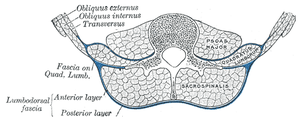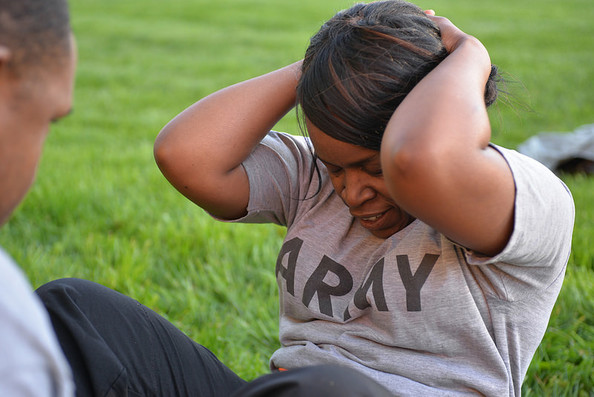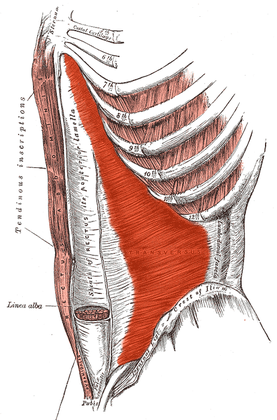|
Abdominal strengthening and core muscle exercises have become increasingly popular over the years. Unfortunately, as with most things that become sensationalized, the hype is misdirected. The media focuses heavily on the six-pack muscles and forgotten about the deep, true stabilizers of the spine. In this post, we will discuss the different core muscles, specifically the rectus abdominus, transversus abdominus (TrA), and internal and external obliques. Many people have heard of the rectus and obliques, but the TrA is often forgot about. In this post, the reader will gain a better understanding of the feed-forward loop necessary to activate the Transversus Abdominus (deepest abdominal muscle) and receive evidenced based exercises to engage the core muscles most appropriately. What Muscles Make Up the Core? The core muscles are comprised of three different layers, surrounding the abdomen like a corset. These muscles attach into the spinal column in the back to provide support between the front and back. Based on their location and size, certain abdominal muscles are better stabilizers while others act as movers. If one muscle is not performing it's intended function, the other muscles are compromised as well. The rectus abdominus is located most superficially and forms your six-pack muscles. This muscle group receives the most attention in today's fitness media. A common misconception people have is associating a six-pack with having a strong core. The rectus is important for performing large trunk movements like sit-ups, but provides little stability to the spine during dynamic activities such as lifting and running. Clinically, I see many individuals that are in great shape and have a strong rectus abdominus, but cannot activate their core muscles in a functional manner. I often see these individuals in pain because their deeper stabilizers are not working properly.  The internal and external obliques are the second outer layer of muscles. They assist in rotation and twisting movements of the spine activated through exercises such as side planks or side crunches. When someone twists or turns to the left, the left internal oblique and right external oblique are activated together. In conjunction with the rectus abdominus the obliques provide some support to the spine, but still do not provide the necessary stability for dynamic spinal movements. The deepest and most important muscle of the core is the transversus abdominus (TrA). This muscle is involuntarily engaged prior to any movement involving the spine. It contracts via feed-forward control, unconsciously in preparation for movement. This means that when you reach out to grab an object, the transversus abdominus automatically contracts before the movement begins. A plethora of musculoskeletal problems arise when this feed-forward loop is interrupted. Based off poor movement patterns or in the presence of pain, this muscle no longer engages involuntarily prior to movement. Studies have shown that individuals with low back pain have a slower and smaller contraction of their TrA compared to healthy individuals. In these instances, the TrA must be retrained. Many people I work with are surprised to find this simple secret behind core stabilization. As stated earlier, a primary source of pain arises when the more superficial abdominal muscles act as stabilizers, leaving the transversus abdominus unengaged. By igniting the feed-forward loop of the transversus abdominus, your risk of low back pain or other musculoskeletal injuries decreases. Transversus Abdominus (TrA) Progression that Targets Your Deepest Abdominal Layer
2 Comments
Manuel Franco
8/29/2023 10:39:23 pm
I just want to say Thank You to everyone who supported me through the years. My name is Manuel Franco, New Berlin, Wisconsin. My story of how I won the Powerball lottery of $768.4M is a bit of a tale. I have been playing Powerball tickets for 6 years now since I turned 18. I bought my first ticket on my 18 birthday. I was feeling very lucky that day because I had contacted Dr. Odunga Michael to help me with the winning Powerball numbers. I really had that great great feeling that I looked at the camera wanting to wink at it. I only did a tiny part of it and trusted him. He gave me the numbers after I played a couple other tickets along with it for $10. I checked my ticket after the winnings came online and saw the numbers were correct including the Power play. I screamed for about 10 minutes because it felt like a dream. I had won $768.4M. You can check my winning testimony with the lottery officials just with my name search. Thank you Dr Odunga. Well, his email is [email protected] and you can also call or Whats-app him at +2348167159012 so you guys can contact him
Reply
Hailey Garcia
6/20/2024 11:08:21 pm
My name is Hailey Garcia and I am from New Jersey. My herpes virus turned to war after 2 years of living with it. I have tried different medical procedures to cure my herpes but to no avail. Most people think herpes is only a minor skin irritation of which herpes has long term effects on health and passes through the bloodstream and can be easily contracted through sexual intercourse. I knew I had herpes from the first day I started feeling itchy in my pubic area and the pain was very unbearable. I couldn't stand it anymore. After 2 years of trying other means to get rid of it, I had to contact Doctor Odunga to help me with a permanent cure. I saw his email and whats-app number from a testimony I read online from a lady who was also helped by him in curing infertility problems, I had faith and contacted him. He assured me of his work and I ordered his herbal medicine. Within 5 days, I didn't feel any pain anymore and within 2 weeks, my skin was all cleared and smooth. I am very grateful to you sir and I write this testimony as others have done to bring those having faith to you sir. If you have herpes or other similar disease and you want it cured, kindly contact Doctor Odunga, Whats-App (wa.me/+2348167159012) OR Email [email protected]
Reply
Leave a Reply. |
Heafner HealthPhysical Therapy Archives
April 2024
Categories |



 RSS Feed
RSS Feed
